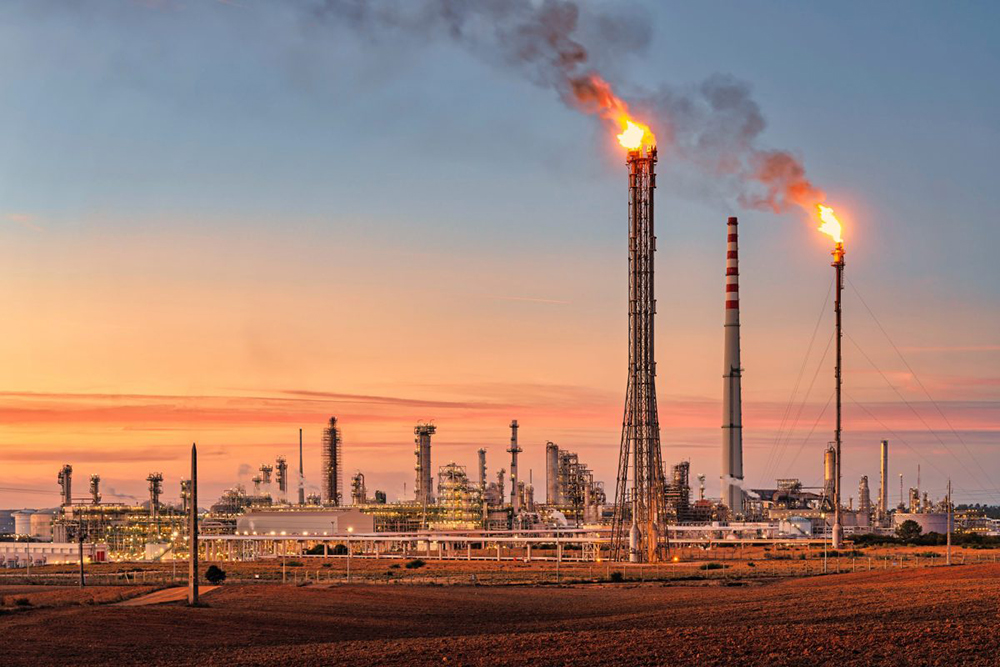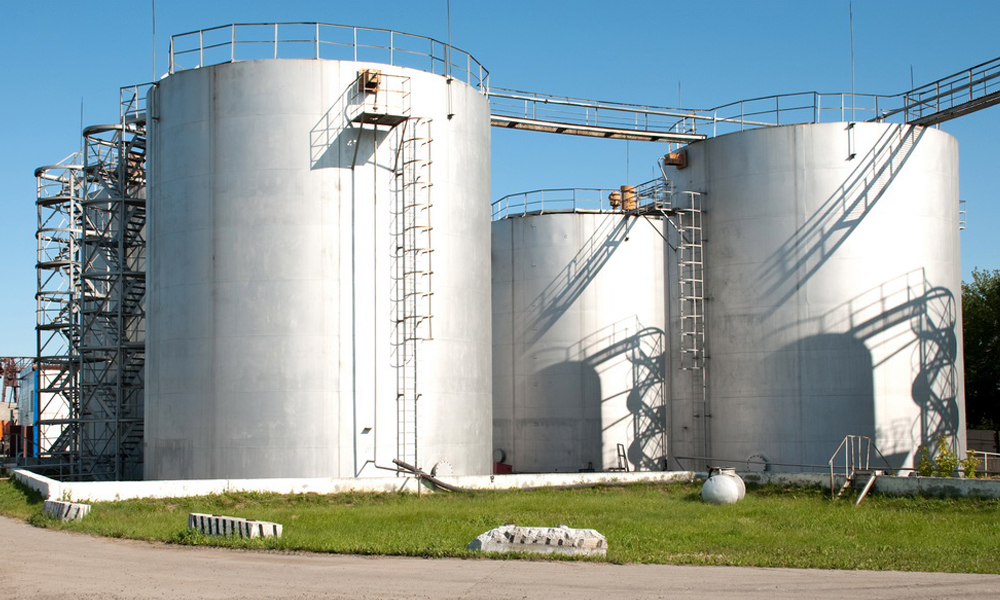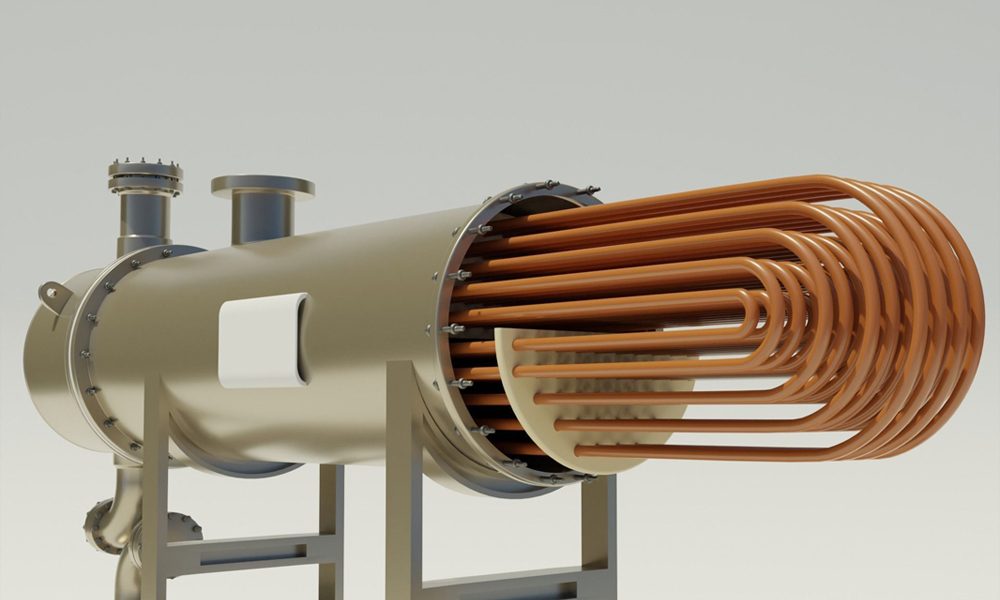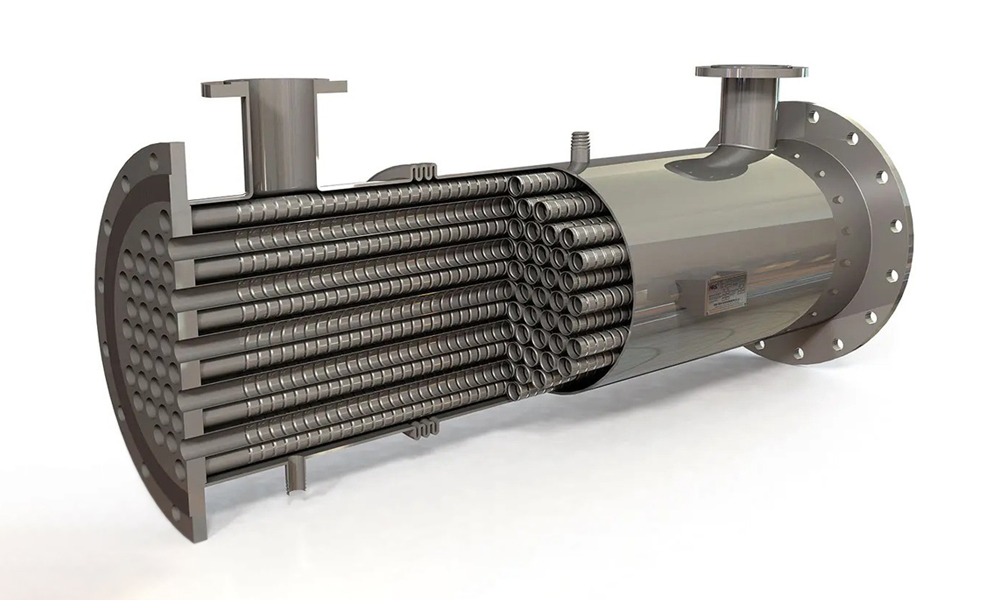A refinery flare, also known as a refinery burner, is one of the key pieces of equipment in the oil and gas industry used to burn waste gases and prevent their release into the environment. These systems play a critical role in ensuring the safety of industrial facilities and reducing environmental pollution.
Definition of a Refinery Flare
A flare is a device used in industrial units such as oil and gas refineries, petrochemical plants, and offshore platforms to burn excess and unwanted gases. These gases may be generated under normal operating conditions, during emergencies, or during startup and shutdown periods. The primary goal of a flare is to safely dispose of these gases through controlled combustion to prevent potential hazards such as explosions or fires.
Main Components of a Refinery Flare
A Petroleum flare system consists of several components that work together to collect, transfer, and safely burn waste gases. Below is a brief overview of the components of a refinery flare:
- Flare Stack: The vertical structure through which waste gases are directed and burned at an appropriate height.
- Burner: The component where the waste gases are ignited.
- Ignition System: Ensures the combustion process begins and maintains a stable flame.
- Liquid Knockout Drum: Separates liquids from the waste gases before entering the flare.
- Pressure and Temperature Control System: Monitors and adjusts the operating conditions of the flare.
Operation of a Refinery Flare
The operation of a refinery flare involves collecting waste gases from various units and directing them to the flare. After passing through the liquid knockout system, the gases enter the burner and are ignited using the ignition system. The flare stack is designed so that combustion products are safely released into the atmosphere, minimizing their negative impact on the environment and worker health.
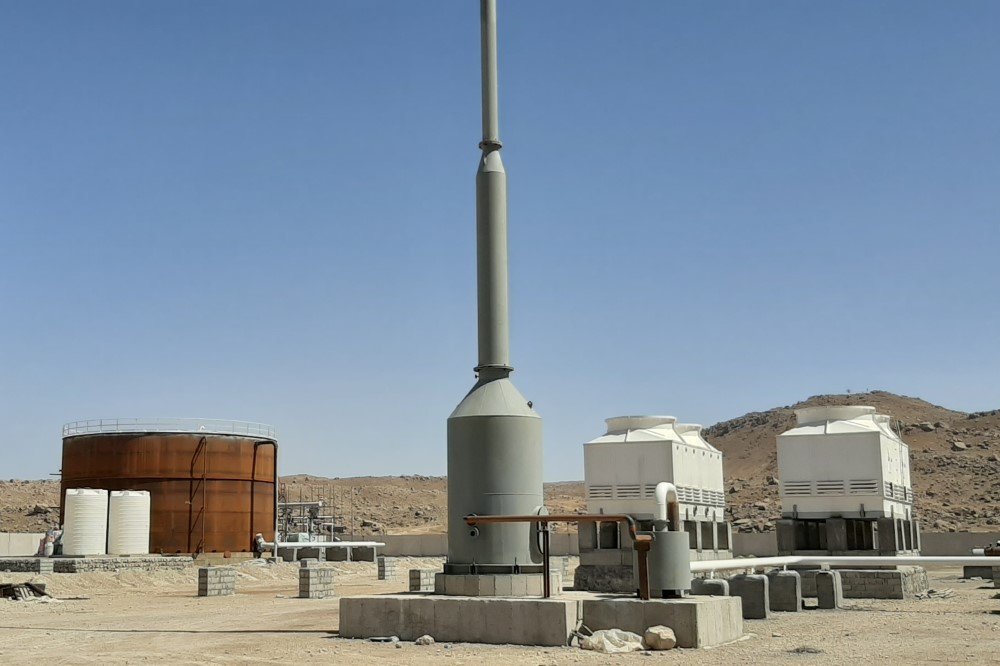
Types of Flares
Flares can be classified into various types based on their design and application:
- Flame Flares: These have an open flame to burn waste gases, suitable for large volumes of gas in emergency situations.
- Smokeless Flares: Designed to burn gases without producing visible smoke, suitable for areas where visual pollution must be minimized.
- Horizontal Flares: Installed horizontally, suitable for areas with limited vertical space.
- Liquid Flares: Designed to burn hydrocarbon liquids and their accompanying gases.
Importance of a Refinery Flare
Flares play an essential role in safety and environmental protection in the oil and gas industry. By burning flammable and toxic gases, they prevent the accumulation of these gases and the associated hazards. Additionally, by reducing the release of greenhouse gases and pollutants, flares contribute to environmental protection.
Environmental Challenges of Flaring
Despite the safety benefits of flaring, this process can lead to the release of pollutants such as carbon dioxide and nitrogen oxides, which have a negative impact on the environment. Therefore, employing technologies to reduce emissions and recover flare gases is crucial.
Pollution Reduction Technologies
Several technologies have been developed to reduce the environmental impact of flaring:
- Flare Gas Recovery Systems: Collecting and reusing waste gases instead of burning them.
- Low Emission Burners: Designed to reduce the production of pollutants during gas combustion.
- Advanced Control Systems: Monitoring and precisely adjusting the flaring process to optimize combustion and reduce emissions.
International Standards for Flare Design
The design and operation of flares must comply with international standards such as API 521 and OSHA to ensure the safety and efficiency of the system. These standards include guidelines for the design, installation, operation, and maintenance of flares.
Maintenance and Inspection of Flares
To maintain optimal performance and prevent hazards, refinery flares require regular maintenance and periodic inspections. This process includes:
- Inspection of the Ignition System: Ensuring the proper functioning of the burner and stable flame.
- Checking Gas Transmission Lines: Monitoring for leaks and ensuring the safety of the lines.
- Cleaning the Flare Stack: Removing deposits and carbon particles that may reduce the flare’s efficiency.
- Calibrating Control Equipment: Ensuring the accuracy of monitoring systems such as pressure and temperature gauges.
Proper maintenance of flares can extend their lifespan and reduce the costs associated with failures or emergency shutdowns.
Petrostructure Company’s Role in Industrial Flare Production
Petrostructure company is one of the Iranian companies involved in the design and production of refinery flares and related equipment, responding to the needs of the oil and gas industry. By utilizing up-to-date technical knowledge and high-quality materials, the company manufactures burners that meet international standards and offer the highest efficiency.
The Future of Flares in the Oil and Gas Industry
With the increasing emphasis on environmental protection and reducing greenhouse gases, new flare technologies have been developed that offer greater efficiency and sustainability. Some of these technologies include:
- Smart Flares: Equipped with artificial intelligence systems for monitoring and automatically adjusting the flaring process.
- Energy Recovery: Utilizing the thermal energy produced in the flare to generate electricity or heat.
- Biogas Flares: Burning gases produced from biological sources instead of fossil fuels.
These innovations could play a crucial role in reducing environmental impacts and improving the efficiency of the oil and gas industries.
Conclusion
The refinery flare is a key component in the oil and gas industry, ensuring both the safety of installations and the reduction of environmental pollution. Proper design and maintenance of the refinery burner can play a significant role in optimizing processes and preserving the environment. Petrostructure Company contributes significantly to improving the performance of domestic industries by providing advanced solutions in the design and production of flares.
References:
- API and OSHA articles and documentation on flaring
- Specialized websites in the field of oil, gas, and refinery equipment
- Reliable scientific reports and articles on industrial flares and pollution reduction technologies

